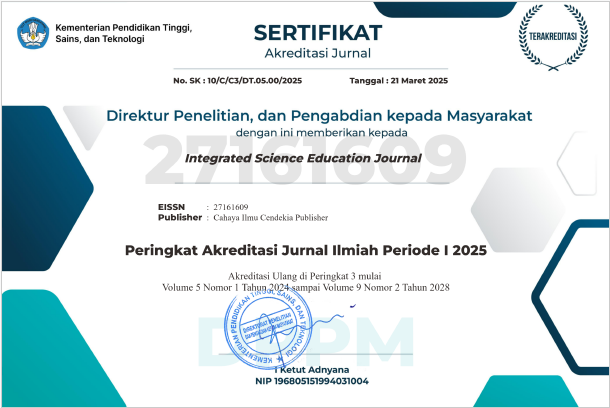Discovering Differences in Consciousness of Facial Features Among Japanese University Students in the Year of Admission According to COVID-19
Abstract
Purpose of the study: This study aims to determine the significant differences in students' awareness of appearance between those admitted to universities during the COVID-19 pandemic and those admitted when the pandemic was deemed controlled in Japan.
Methodology: The author hypothesized notable variations in the change of self-consciousness regarding appearance, particularly facial appearance, contingent upon the year of admission. To test this hypothesis, a questionnaire survey was conducted among 428 students in Japan attending universities as of Fiscal Year 2023 to gauge their facial self-consciousness.
Main Findings: The initial analysis focused on changes in body image and facial self-consciousness. However, due to the predominant focus on facial aspects, a chi-squared test was allowed to determine the relationship between the year of admission and changes in facial self-consciousness. The results indicated a significant difference between the admission year and changes in facial self-consciousness, with the largest difference between 2020 and 2023.
Novelty/Originality of this study: The author used Cross-tabulation and Chi-Square analyses to compare previous years with 2023. The findings showed significant differences in facial self-consciousness depending on the admission year, with a p-value of less than 0.05. The results indicated statistically significant differences in facial self-consciousness among students admitted in 2020. (p < .05, =.005, =.014, =.016).
References
N. Mazurkiewicz, J. Krefta, and M. Lipowska, “Attitudes Towards Appearance and Body-Related Stigma Among Young Women With Obesity and Psoriasis,” Frontiers in Psychiatry, vol. 12, no.788439. pp. 1-11, 2021. doi: 10.3389/fpsyt.2021.788439.
M. Nishikura, “A Study on the Concept of 'Lookism': Discrimination based on Appearance,” Wakayama University Academic Repository, vol. 71, pp. 147-154, 2021. doi: 10.19002/AN00257999.71.147.
L. E. Park and J. K. Maner, “Does self-threat promote social connection? The role of self-esteem and contingencies of self-worth,” Journal of Personality and Social Psychology, vol. 96, no. 1, pp. 203-217, 2009. doi: 10.1037/a0013933.
O. M. Shapir and Z. Shtudiner, “Beauty is in the Eye of the Employer: Labor Market Discrimination of Accountants,” Frontiers in Psychiatry, vol. 13, no. 928451. pp. 1-12, 2022. doi: 10.3389/fpsyg.2022.928451.
N. Tanimoto, “People intending to undergo cosmetic surgery or cosmetic medical care,” Kansai University Repository Departmental Bulletin Paper, vol. 1, no. 37, pp. 37-59, 2012.
T. von Soest, I. L. Kvalem, H. E. Roald, and K. C. Skolleborg, “The Effects of Cosmetic Surgery on Body Image, Self-Esteem, and Psychological Problems,” J. Plast. Reconstr. Aesthet. Surg., vol. 62, no. 10, pp. 1238-1244, 2009. doi:10.1016/j.bjps.2007.12.093.
R. Wang et al., “A novel coronavirus outbreak of global health concern,” The Lancet, vol. 395, no. 10223, pp. 470-473, 2020. doi: 10.1016/S0140-6736(20)30185-9.
C. Wang et al., “Remdesivir and chloroquine effectively inhibit the recently emerged novel coronavirus (2019-nCoV) in vitro,” Cell Research, vol. 30, no. 3, pp. 269-271, 2020. doi: 10.1038/s41422-020-0282-0.
R. T. Cristel, D. Demesh, and S. H. Dayan, “Video conferencing impact on facial appearance: Looking beyond the COVID-19 pandemic,” Facial Plastic Surgery and Aesthetic Medicine, vol. 22, no. 4, pp. 238-239, 2020. doi: 10.1089/fpsam.2020.0279.
The Aesthetic Society, “Aesthetic Plastic Surgery National Databank Statistics 2020,” Retrieved: Dec. 20, 2023, [Online]. Available: https://cdn.theaestheticsociety.org/media/statistics/aestheticplasticsurgerynationaldatabank-2020stats.pdf.
K. Nakayachi et al., “Why do Japanese people use masks against COVID-19, even though masks are unlikely to offer protection from infection?,” Frontiers in Psychology, vol. 11, no. 1918, pp. 1-5, 2020. doi: 10.3389/fpsyg.2020.01918.
R. Sakakibara and H. Ozono, “Why do people wear a mask? A replication of previous studies and examination of two research questions in a Japanese sample,” Frontiers in Psychology, vol. 92, no. 5, pp. 332-338, 2020. doi: 10.4992/jjpsy.92.20323.
F. Nikmah, M. Maison, and S. Syamsurizal, “Online Vs Offline: Comparison of Effectiveness of PhET Simulation and Science KIT in Junior High School,” Integrated Science Education Journal, vol. 4, no. 3, pp. 96-103, 2023. doi: 10.37251/isej.v4i3.472.
E. C. Nwune, N. K. Oguezue, and B. I. Odum, “Secondary School Students’ Perception of Science Laboratory Accident Status and Preventive Measures in Awka Education Zone,” Integrated Science Education Journal, vol. 4, no. 3, pp. 104-110, 2023. doi: 10.37251/isej.v4i3.550.
W. H. Marya and K. S. Judith, “Presentations for Decision Makers Third Edition,” New York, NY, USA: Wiley, 1996.
H. Wada et al., “Proposal of a Design Support Method of Backcasting Scenarios for Sustainable Society,” Transactions of the Japan Society of Mechanical Engineers Series C, vol. 79, no. 799, pp. 845–857, 2013. doi: org/10.1299/kikaic.79.845.
L. J. Cronbach, “Coefficient alpha and test internal structure of tests,” Psychometrika, vol. 16, pp. 297-334, 1951.
M. Takamoto and T. Hattori, “Review of psychological scale development focusing on reliability coefficient in Japan,” Japanese Psychological Review, vol. 58, no. 2, pp. 220-235, 2015. doi: 10.24602/sjpr.58.2_220.
Cabinet Secretariat, Mar. 2023, “Mask Use Guidance Starting From 13 Mar. 2023,” Office for COVID-19 and Other Emerging Infectious Disease Control, Cabinet Secretariat, Government of Japan. [online]. Available: https://corona.go.jp/proposal/
V. C. C. Cheng, S. C. Wong, V. W. M. Chuang, et al., “The role of community-wide wearing of face mask for control of coronavirus disease 2019 (COVID-19) epidemic due to SARS-CoV-2,” Journal of Infection, vol. 81, no. 1, pp. 107-114, 2020. doi:10.1016/j.jinf.2020.04.024.
J. Howard, A. Huang, Z. Li, et al., “An evidence review of face masks against COVID-19,” in Proc. the National Academy of Sciences, vol. 118, no. 4, p. e2014564118, 2021. doi: 10.1073/pnas.2014564118.
D. K. Chu, E. A. Akl, S. Duda, et al., “Physical distancing, face masks, and eye protection to prevent person-to-person transmission of SARS-CoV-2 and COVID-19: a systematic review and meta-analysis,” The Lancet, vol. 395, no. 10242, pp. 1973-1987, 2020. doi: 10.1016/S0140-6736(20)31142-9.
M. Liang, L. Gao, C. Cheng, et al., “Efficacy of face mask in preventing respiratory virus transmission: A systematic review and meta-analysis,” Travel Medicine and Infectious Disease, vol. 36, 101751, 2020. doi: 10.1016/j.tmaid.2020.101751.
M. Kamatani, “The impact of the COVID-19 epidemic on explicit and implicit attitudes towards black sanitary mask wearer COVID-19,” The Japanese Journal of Psychology, vol. 92, no. 5, pp. 350-359, 2021. doi: 10.4992/jjpsy.92.20046.
K. Nozomi, “A study of Japanese university students influenced by the Covid-19 pandemic and their awareness with their one’s own face,” International Journal of Cognitive Research in Science, Engineering and Education, vol. 10, no. 2, pp. 17-26, 2022. doi: 10.23947/2334-8496-2022-10-2-17-26.
K. Nozomi, “A Study of Japanese University Students’ Perceptions of Their Appearance and Their Tendency to Wear Masks During School During the COVID-19,” J. Bs. Edu. R, vol. 4, no. 2, pp. 50-56, 2023. doi: 10.37251/jber.v4i2.327.
J. Cohen, “Statistical Power Analysis for the Behavioral Sciences,” New York, NY, USA: Routledge, 1988, pp. 224-227.
S. M. Rice, E. Graber, and A. S. Kourosh, “A pandemic of dysmorphia: 'Zooming' into the perception of our appearance,” Facial Plastic Surgery & Aesthetic Medicine, vol. 22, no. 6, pp. 401–402, 2020. doi:10.1089/fpsam.2020.0454,
C. Silence, S. Rice, S. Pollock, J. Lubov, L. Oyesiku, S. Ganeshram, A. Mendez, F. Feeney, and A. Kourosh, “Life after lockdown: zooming out on perceptions in the post-videoconferencing era,” International Journal of Women's Dermatology, vol. 7, pp. 774-779, 2021. doi: 10.1016/j.ijwd.2021.08.009.
M. Yazawa and T. Suzuki, “A new appearance problem in with/after corona era—focusing on the appearance concerns of online video calling,” Appearance and Adornment Psychological Studies, vol. 1, no. 1, pp. 51-58, 2022. doi:10.57331/aaps.1.1_51
M. R. Shauna, A. S. Julia, L. Tiffany, G. Emmy, and K. A. S. Arianne, “Zooming into cosmetic procedures during the COVID-19 pandemic: the provider's perspective,” International Journal of Women's Dermatology, vol. 7, pp. 213-216, 2021. doi: 10.1016/j.ijwd.2021.01.012.
A. Mizumoto and O. Takeuchi, “Basics and Considerations for Reporting Effect Sizes in Research Papers,” Kansai English Language Society (SELT), vol. 31, pp. 57-66, 2008. [Online]. Available: hdl.handle.net/10112/5019.
Copyright (c) 2024 Nozomi Komiya

This work is licensed under a Creative Commons Attribution-NonCommercial 4.0 International License.
Authors who publish with this journal agree to the following terms:
- Authors retain copyright and acknowledge that the Integrated Science Education Journal is the first publisher licensed under a Creative Commons Attribution 4.0 International License.
- Authors are able to enter into separate, additional contractual arrangements for the non-exclusive distribution of the journal's published version of the work (e.g., post it to an institutional repository or publish it in a book), with an acknowledgment of its initial publication in this journal.
- Authors are permitted and encouraged to post their work online (e.g., in institutional repositories or on their website) prior to and during the submission process, as it can lead to productive exchanges and earlier and greater citation of published work.







.png)
.png)






